
Changes to lock and dam aimed at stopping invasive carp
The U.S. Army Corps of Engineers has adjusted the flow of water through a Mississippi River lock and dam in southeastern Minnesota in an effort to slow the spread of invasive carp, which have been discovered as far north as Redwood Falls in the Minnesota River.
The changes to Lock and Dam 8 near Genoa, Wisconsin, were based on recommendations from a research team led by Peter Sorensen, a University of Minnesota professor and expert on invasive carp.
Sorensen said it's the first time the Corps of Engineers has adjusted a dam's operations to prevent the spread of an invasive species.
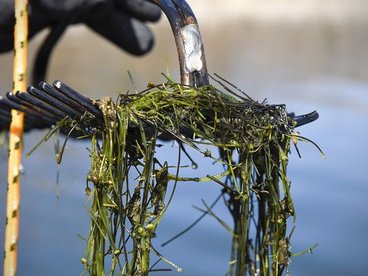
Lake Osakis searched for starry stonewort
Two hundred volunteers across the state turned out on Saturday, August 5 to participate in Starry Trek, a statewide search for starry stonewort that was organized by the Minnesota Aquatic Invasive Species Research Center and University of Minnesota Extension.
Here in Todd County, eight volunteers participated. After being trained to identify starry stonewort, volunteers fanned out and checked four lakes across the county including Osakis, Maple, Little Birch and Big Birch.
After volunteers searched a total 211 public accesses on 178 lakes statewide, the Minnesota
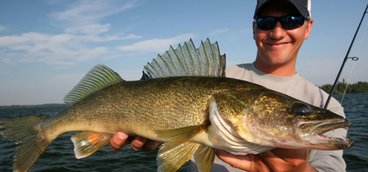
DNR launches high-tech study of food webs in Minnesota's largest walleye lakes
Managing fish populations in Minnesota’s iconic walleye lakes gets trickier with each passing year.
The earth is warming, invasive species are proliferating and fishing pressure in the electronic age is ever more intense. Gone are the days when fisheries managers could stay ahead of the curve by annually measuring the abundance or scarcity of a target species or key forage fish.
A new study by the Department of Natural Resources (DNR) is digging deeper. Funded by tax money allocated last month by the Minnesota Aquatic Invasive Species Research Center, researchers are prying into what’s going on in the food chains below and around walleyes in nine of the state’s 10 largest walleye lakes.

Starry stonewort found in third Stearns County lake
The hunt for Minnesota’s newest aquatic invasive species in nearly 200 lakes across 20 counties has turned up the discovery of starry stonewort in a Stearns County lake.
The state Department of Natural Resources announced Tuesday the finding in Grand Lake — the first confirmation of the invasive algae in a Minnesota lake in 2017. It follows two other infestations of Stearns County lakes by the invasive, which grows into dense mats that can shroud shallow waters, choke out native plants, and create a wall between fish and their spawning grounds.
“My heart sank,” said Scott Palmer, chairman of the Grand Lake Improvement District board, adding about the popular fishing lake: “It’s one of the gems of central Minnesota.”
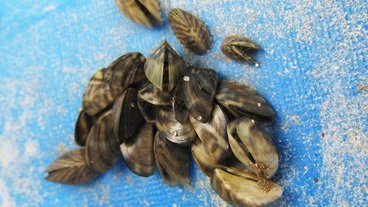
Guardians of the waterways
Seven years ago, Anthony Vavoulis bought a place on a lake in Washington County, a short drive from his home in St. Paul. An avid kayaker, Vavoulis, ’74 B.E.D., ’75 B.Arch., often found himself drawn to the edges of the water, where wetlands dominated. As Vavoulis’ boat slipped silently through the reeds and rushes, unfamiliar plants and animals surfaced as if from nowhere—it was a tiny magical kingdom hidden in plain sight. “Often, these plants looked the same, but up close they were actually quite different,” Vavoulis says.
His adventures in this watery world led him to a greater appreciation of Minnesota’s diverse ecosystem. As a U of M student, he had taken an elective course that focused on the state’s native plants—“It was one of my favorite classes!”—and his up-close interaction with plants, animals, and the landscape around his lake home reignited his interest.

Is It Time For New Tactics?
Zebra mussels are a fast growing problem for numerous waterways throughout the upper Midwest. Spreading all the way from their native home in the lakes of southern Russia and the Ukraine, this aquatic invasive species has even made its way to the shores of Lake Yankton and the Missouri River.
While prevention still remains the best method for trying to control the spread of these aquatic invaders, researchers at the University of Minnesota are exploring other methods to combat zebra mussels.
Michael McCartney, a zebra mussel expert in the aquatic invasive species department at the University of Minnesota, has been working since 2013 on various methods of preventing or slowing the spread of zebra mussels.
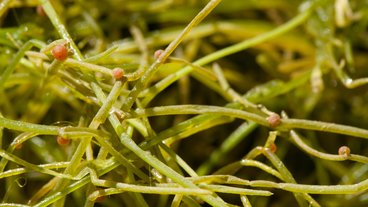
Volunteers scour Minnesota lakes for newest invasive: starry stonewort
It was a sort of scavenger hunt, only the participants were hoping to come home empty-handed.
In an effort to curb the spread of starry stonewort, Minnesota’s newest aquatic invasive species, scientists at the University of Minnesota and two partner organizations put out the call to citizen volunteers who want to help save the state’s lakes — or at least learn more about icky weeds. On Saturday, more than 220 volunteers turned up, inspecting dozens of lakes and collecting samples of anything that looked suspicious.
“We’ve found that people are eager to get involved,” said Dan Larkin of the Minnesota Aquatic Invasive Species Research Center, which coordinated the daylong survey in partnership with the U’s Extension and the Minnesota Department of Natural Resources (DNR). “It’s just a matter of giving them the tools.”
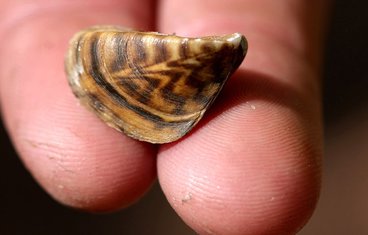
Meet the scientists working to stop spread of zebra mussels
Kenny Beckman’s laboratory at the University of Minnesota’s Cancer and Cardiovascular Research Building features some the world’s most sophisticated gene-mapping tools, including a newly arrived $1 million sequencer that will accelerate groundbreaking work on DNA.
These instruments also represent the most promising front in a high-speed scramble to halt the spread of zebra mussels, which for two centuries have wreaked biological havoc in European and North American waterways.
Beckman’s lab expects to release later this summer the first ever sequence of the entire genome of the highly invasive mollusk. Researchers say it will be a major advance in the race to unleash sophisticated chemical, biological and genetic weapons against a foe that, in the 25 years since it appeared in Minnesota’s lakes and rivers, has been pursued mostly by boat inspectors and specially trained dogs.

How the zebra mussel scourge spread across Minnesota
Zebra mussels are invading and choking more of Minnesota’s lakes and rivers than ever - and their relentless advance poses a growing threat to our state’s way of life.
Summer after summer, Pat Rooney looked out at this revered North Woods lake, hoping the tea-colored waters that lured so many anglers also provided a magical barrier against a creature that might destroy it.
Zebra mussels already were fouling some of the biggest and best known waters in Minnesota, and were spreading throughout neighboring Cass Lake, a popular swimming, boating and fishing lake near Bemidji. While the larvae had appeared in “Lake Winnie,” scuba divers repeatedly failed to find evidence of adult shells – the surest sign of infestation.

Out-musseling the mussels: Researcher hopeful of new tactic against invasive species
A researcher with the University of Minnesota is out to make zebra mussels their own worst enemy.
Mike McCartney, a zebra mussels expert in the aquatic invasive species department at the University of Minnesota, gave a presentation at this year's Lake L'Homme Dieu Association meeting on how communities such as Alexandria can limit and prevent the spread of zebra mussel invasion in the lakes, and perhaps use genetic engineering to combat them.
The new research his department is conducting deals with what they call genetic biocontrol of zebra mussels, an invasive species that can harm lakes by eating up nutrients needed to support native fish. Zebra mussels reproduce rapidly and cause other problems from clogging pipes to cutting the feet of swimmers with their sharp-edged shells.
